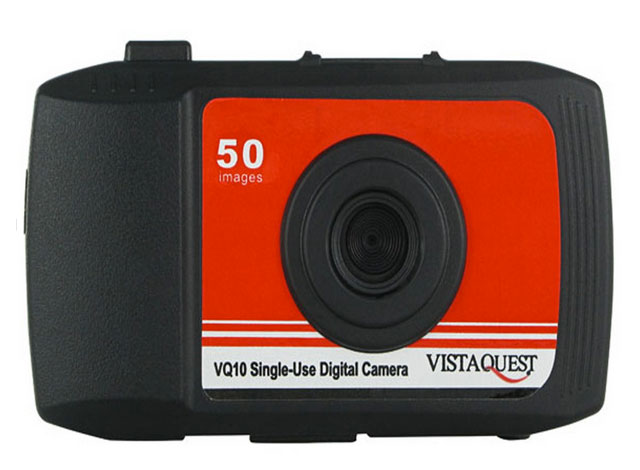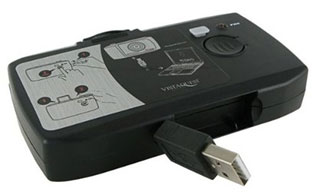
Disposable cameras took a bit of a hit with the onset of digital and the rise of the cameraphone, but the VQ10 from US firm VistaQuest is a disposable digital camera designed to go places where you wouldn't bring a "proper" camera, or indeed your phone.
It's on sale for about $20—but is it worth the outlay?
Design

The viewfinder is nothing more than a flip-up plastic square, and gives very little indication of how the picture will actually look. When you're composing your pic you'll need to have your eye pressed close to it, but the framing will actually be much larger than what you're seeing. Of course, you can't tell that this is the case, because you only get one download. Therefore you'll need to take all 50 pictures before you get a chance to see what they look like. It's a shame because it makes the whole business much more hit and miss than it really needs to be, even for a camera this cheap.
Picture quality and performance
It produces pictures at a set 1280×960-pixel resolution, enough for 5×7-inch prints, allegedly. But the picture quality, as you might expect for the price, is considerably less than great, and it makes even a cheap camphone look like a Hasselblad in comparison. You're very likely to encounter blur with movement (and even with static shots), plus you'll need good light to get anything approaching a passable picture. Colorr balance isn't accurate and you'll need to be prepared for unnatural hues, purple fringing and jagged edges. It doesn't handle depth of field at all well either, and for landscapes be prepared for wavering focus.

You'll also need to take care that it's powered up by double checking the power LED—the mechanical clicker will happily count off your shots, even if your snaps aren't actually being saved.
There are some more expensive versions on the way, apparently, both with and without flash, and some even come with a 1.4-inch LCD screen. If they can keep the prices down, one of those might be a better bet than this.
Conclusion
The basic idea is sound—a low-cost, low-risk way to introduce the kids to photography, or for holiday trips when you want to take pictures on the beach or up a mountain. The trouble is the picture quality and usability, both of which are frustratingly poor. The viewfinder doesn't give you much of a clue about how your pics will look while color, focus and detail all leave a great deal to be desired. Some of these issues might be helped if you could see a few sample pics as you went along, but with only one download available, that's just not possible.
Specifications
- Type : Single-use disposable digital camera
- Max pics : 50
- Picture format : JPEG
- Resolution : 1280×960
- F-stop : f/2.8
- ISO speed : 100
- Exposure time : 1/156 sec
- Connection : USB
- Size : 112×66×27mm
- Weight : 130g
reader comments
52